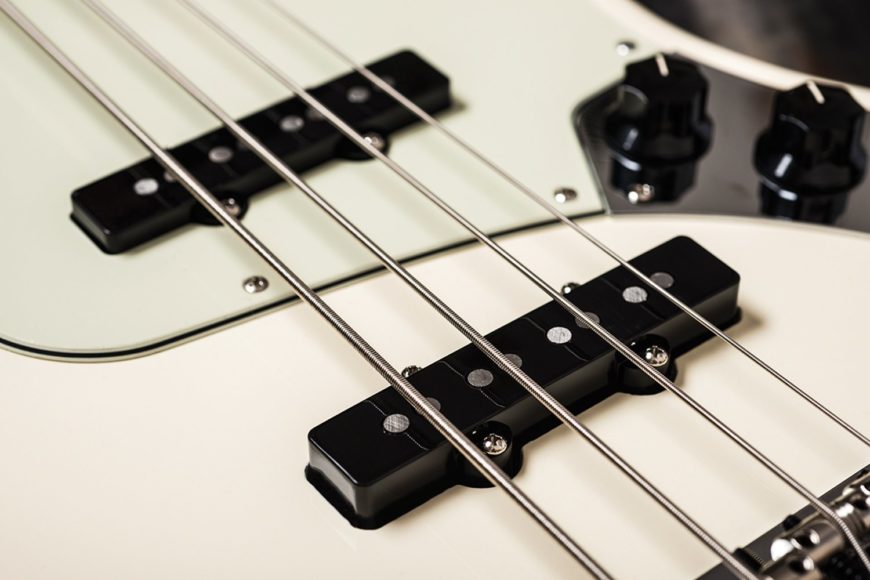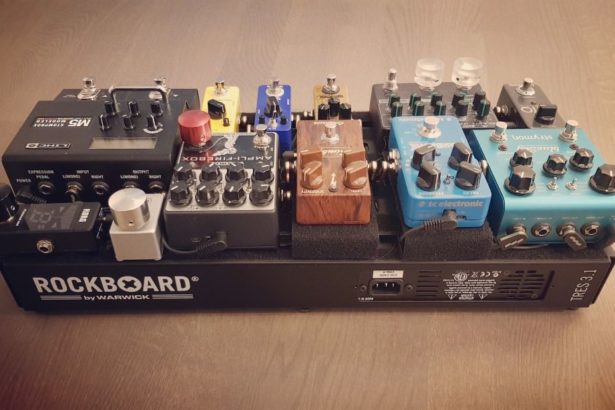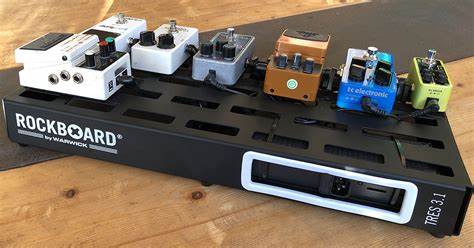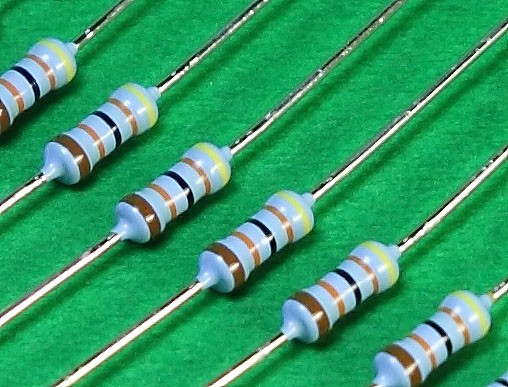Passive vs Active Bass Guitars

Bass guitars are fundamental to modern music, providing the crucial low-end foundation that drives rhythm and harmony. Two main types of bass guitars dominate the market: passive and active. This article will explore the technical differences between these two types and their impact on sound and playability.
Passive Bass Guitars
Passive bass guitars are the traditional design, featuring simple passive electronics based on resistors and capacitors without any built-in preamp or powered circuits. The key components of a passive bass include:
- Pickups: Usually magnetic, they convert string vibrations into electrical signals.
- Volume and tone controls: Basic potentiometers that adjust overall output and frequency response.
The simplicity of passive basses often results in a warmer, more organic tone. Many players appreciate the dynamic response and natural sound of passive instruments.
Legendary bassist James Jamerson, known for his work with Motown Records, famously used a passive Fender Precision Bass. He once said, “The P-Bass is the only bass I’ve ever needed. It’s got all the tone right there in the wood.“
Active Bass Guitars
Active basses incorporate a built-in preamp powered by a battery, typically 9V. This preamp allows for:
- Boosting of the signal before it reaches the amplifier
- More extensive equalization options
- Higher output and lower noise (best Signal-to-Noise Ratio – SNR)
The active circuitry provides greater tonal flexibility and clarity, especially in the high frequencies. It also helps maintain signal strength over long cable runs if there is no radio/wireless transmitter.
Flea from the Red Hot Chili Peppers, known for his energetic playing style, often uses active basses. He has stated, “Active basses give me that extra punch and clarity I need to cut through in our music. It’s like having a built-in effects pedal.“
Technical Comparison Summary
- Tone:
- Passive: Warmer, more vintage-like tone with natural dynamics
- Active: Brighter, more modern sound with enhanced clarity
- Output:
- Passive: Lower output, more susceptible to noise over long cables. Typically ranges from 100mV to 1V peak-to-peak, depending on pickup strength and playing intensity.
- Active: Higher output, maintains signal integrity over distance. Usually ranges from 1V to 2V peak-to-peak, but can go up to 5V or more in some high-output designs.
- EQ Control:
- Passive: Limited to basic tone control
- Active: Expanded EQ options, often including bass, mid, and treble controls
- Impedance:
- Passive: Higher impedance, more susceptible to tone loss with longer cables. Typically ranges from 6kΩ to 20kΩ (kilohms), with most falling between 7kΩ to 15kΩ.
- Active: Lower impedance, better at driving long cable runs. Typically ranging from 100Ω to 1kΩ.
- Maintenance:
- Passive: No battery required, less maintenance
- Active: Requires periodic battery changes
- Versatility:
- Passive: More consistent tone, less adaptable to different styles
- Active: Highly adaptable to various musical genres and playing techniques
The higher output voltage of active basses is one reason they’re often perceived as louder or punchier. This higher signal level can help drive pedals and preamps more effectively, potentially resulting in a cleaner overall signal path. The lower output impedance of active basses is one of their key advantages. This lower impedance allows for longer cable runs without significant signal loss and generally provides better compatibility with a wide range of audio equipment.
Understanding the impedance of your bass output is crucial for proper impedance matching with your amplifier or other audio equipment. Here are some key points to consider:
- Higher impedance outputs (like those from passive basses) are more susceptible to capacitance in cables, which can result in high-frequency loss over longer cable runs.
- Lower impedance outputs (like those from active basses) are better at driving long cable runs and are less affected by the capacitance of the cable.
- Most modern bass amplifiers and audio interfaces are designed to accommodate a wide range of input impedances, but it’s always worth checking the specifications of your equipment to ensure optimal matching.
Interaction with the bass amp
The differences between passive and active basses have significant implications for how they interact with bass amplifiers. Here are the key points to consider:
- Input Sensitivity:
- Passive basses: Due to their lower output, amplifiers need higher input sensitivity to achieve the same volume. This can sometimes lead to more noise if the amp’s preamp has to work harder.
- Active basses: The higher output means amplifiers don’t need to boost the signal as much, potentially resulting in a cleaner sound with less noise.
- Impedance Loading:
- Passive basses: Their higher output impedance can be more susceptible to loading effects from the amplifier’s input. This can sometimes result in a slight loss of high frequencies, especially with longer cables.
- Active basses: The lower output impedance is less affected by the amplifier’s input impedance, maintaining a more consistent tone regardless of cable length or amp input characteristics.
- EQ and Tone Shaping:
- Passive basses: Amplifiers often need to do more heavy lifting in terms of EQ and tone shaping. Many bass amps are designed with this in mind, offering extensive EQ controls.
- Active basses: With onboard preamps and EQ, active basses often require less extreme EQ adjustments at the amplifier. Some players prefer to set their amp EQ flat and use their bass’s onboard controls for tone shaping.
- Headroom and Distortion:
- Passive basses: Generally have more headroom before clipping the amp’s input stage, allowing for a wider dynamic range.
- Active basses: The higher output can sometimes push an amp’s input stage into slight distortion more easily, which some players use creatively for tonal coloration.
The choice between passive and active bass guitars ultimately comes down to personal preference, playing style, and the demands of your musical genre. Many professional bassists own and use both types, selecting the appropriate instrument for each specific musical situation.
Legendary bassist Bootsy Collins, known for his work with James Brown and Parliament-Funkadelic, once said about his experience with different bass and amp combinations: “Each setup has its own voice. Sometimes you want that warm, overdriven tube sound from pushing a passive bass through a vintage amp. Other times, you need that crystal clear, punchy tone that comes from an active bass through a modern solid-state amp. It’s all about matching the right tool to the right job.“
Renowned session bassist Carol Kaye, who has played on thousands of recordings, once remarked on the difference: “With passive basses, you’re working with what the instrument naturally gives you. Active basses let you push that initial signal harder, which can be great for certain styles or recording situations.“
Bass innovator Jaco Pastorius, known for his work with Weather Report and as a solo artist, was an early adopter of active electronics. He once said, “The active pickup system gave me a clearer signal and more control over my tone. It was like removing a barrier between my fingers and the audience’s ears.“
Jazz bass virtuoso Marcus Miller, known for his work with Miles Davis and his solo career, is a proponent of active basses. He explains, “The active electronics give me a palette of tones to work with. It’s like having a mixing board right on my instrument.“
As Geddy Lee of Rush, who has used both passive and active basses extensively, wisely noted, “It’s not about which is better. It’s about which one speaks to you and helps you express your musical ideas most effectively.“
Understanding how your bass interacts with your amplifier is crucial for achieving your desired tone. Whether you’re using a passive or active bass, being aware of these interactions can help you optimize your setup and get the most out of your equipment. Many professional bassists have multiple basses and amplifiers, allowing them to choose the perfect combination for each musical situation.



